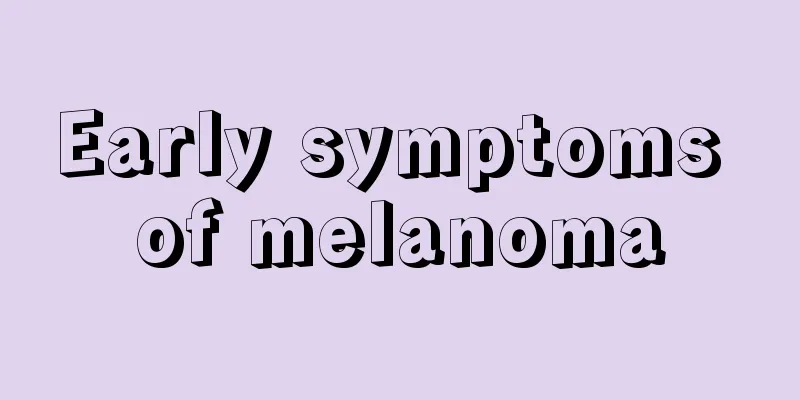What is reduced hemoglobin

|
Reduced hemoglobin is a type of hemoglobin. I believe many friends don’t know much about reduced hemoglobin. So what is reduced hemoglobin? Next, this article will introduce to you what is reduced hemoglobin, for your reference only. If you want to know what reduced hemoglobin is, please continue reading! What is Reduced Hemoglobin? Reduced hemoglobin is an old name, now mostly called deoxyhemoglobin, which refers to hemoglobin that does not carry oxygen. Reduced hemoglobin is purple-blue. The average concentration of reduced hemoglobin in normal capillaries is 2g/dl. When the reduced hemoglobin in the capillaries reaches 5g/dl or above, the skin and mucous membranes appear bluish purple, which is called cyanosis and is common in hypoxic hypoxia. Cyanosis refers to a phenomenon in which the skin and mucous membranes turn bluish purple due to an increase in reduced hemoglobin in the blood. It can also be called cyanosis. This change often occurs in areas where the skin is thinner, less pigmented and more capillary-rich, such as lips, fingers (toes), nail beds, etc. When the reduced hemoglobin rises above 5 grams/dl of blood, the blood will turn dark purple. Venous blood is dark red because it contains more reduced hemoglobin, and it appears bluish purple when it passes through the skin. The so-called "blue veins" on the arms are veins. Increased reduced hemoglobin in the blood may cause the following clinical manifestations: 1. Central cyanosis: caused by decreased arterial oxygen saturation due to heart and lung diseases. Cyanosis caused by respiratory diseases is called pulmonary cyanosis, which is common in respiratory obstruction, severe pneumonia, pulmonary congestion, pulmonary edema, large pleural effusion, spontaneous pneumothorax, etc. Cyanosis caused by cardiovascular disease is called cardiac cyanosis, which is common in cyanotic congenital heart diseases such as tetralogy of Fallot. Its clinical characteristics are systemic cyanosis. In addition to the extremities and face (lips, nose tip, cheeks, earlobes), cyanosis can also be seen on the skin and mucous membranes of the trunk (including the tongue and oral mucosa). The skin in the cyanotic area is warm and the cyanosis does not disappear with local warming or massage. 2. Peripheral cyanosis: caused by peripheral blood flow obstruction. It is seen in systemic congestion, insufficient blood perfusion of peripheral tissues, and local blood circulation disorders, such as right heart failure, large pericardial effusion, severe shock, thromboangiitis obliterans, cold stimulation, etc. Its clinical characteristics are that cyanosis often appears at the extremities and drooping parts of the limbs, such as the extremities, earlobes, and nose tips. The skin in the cyanotic area is cold. If it is heated or massaged to warm it, the cyanosis will be reduced or disappear. 3. Mixed cyanosis: Central cyanosis and peripheral cyanosis coexist, which is common in total heart failure. The above is an introduction to what reduced hemoglobin is. I believe that after reading the above introduction, you already know what reduced hemoglobin is. From the above introduction, we can know that reduced hemoglobin is hemoglobin that does not contain oxygen. If this type of hemoglobin increases in the blood, it may be a manifestation of disease! |
<<: Why is there swelling on one side of my neck?
>>: What is the route of infection of Ureaplasma urealyticum
Recommend
What are the symptoms of small cell lung cancer
When it comes to small cell carcinoma, many patie...
What are the dangers of white precipitate in urine
Some patients with white precipitate in urine are...
Tips for yellow discharge due to facial allergies
In daily life, the first impression is very impor...
What are the causes of teratoma?
Ovarian teratoma is a common type of ovarian germ...
Five things to do in the spring to avoid getting sick for the whole year
When the words "beginning of spring" an...
What should I pay attention to when cleaning the black lumps in my belly button
In life, we may accidentally find black lumps in ...
What is the key method to prevent bladder cancer?
Bladder cancer also has the characteristic of fam...
Six signs to help you find invisible cancer
Many people find out they have cancer when it is ...
Is the cure rate of squamous cell carcinoma in skin cancer high?
Early diagnosis of squamous cell carcinoma among ...
Dietary taboos for patients with cervical cancer
Cervical cancer diet issues still need to be note...
What should I do if my clothes turn yellow due to underarm sweating?
Some people have well-developed sweat glands and ...
Should I apply hot or cold compress when I have a fever
Fever is a very common phenomenon in life. There ...
What are the clinical symptoms of lung cancer? Common clinical symptoms of lung cancer
Lung cancer is a malignant tumor. Its incidence a...
What are the reasons for the smog weather
Haze weather has also appeared in recent years. I...
How to quickly relieve shoulder pain
Long-term use of mobile phones, watching TV serie...









